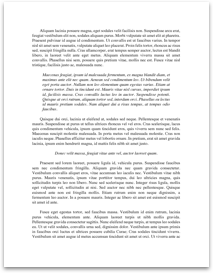PHIL 447 Final Exam Solution
http://www.homework-bank.com/downloads/phil-447-final-exam-solution/
PHIL 447 Final Exam Solution
Question 1. (TCOs 3, 6, 7, 9) Here is a passage that contains a rhetorical fallacy.
Name that fallacy, and in a paragraph, explain why the argument is irrelevant to the point of the passage. Here is your example for this question:
I know I forgot to deposit that check into the bank yesterday. But I can't do anything that pleases you. I brought you flowers yesterday and you didn't even put them in water.
Question 2. (TCOs 5, 8) In the example below, identify the presumed cause and the presumed effect. Does the example contain or imply a causal claim, a hypothesis, or an explanation that cannot be tested?
If it does fall into one of those categories, tell whether the problem is due to vagueness, circularity, or some other problem of language.
Also tell whether there might be some way to test the situation if it is possible at all.
Here is your example:
This part of the coastline is subject to mudslides because there is a lack of mature vegetation growing on it.
Question 3. (TCOs 2, 4) Explain in what way the thinking of the following statement is wrong or defective. Give reasons for your judgment.
There must be something to palm reading. Millions of people believe in it.
Question 4. (TCOs 3, 9) Briefly discuss how we look at sample size, sample diversity and bias in evaluating statistical studies. What factors do we look for and what questions do we ask in evaluating these aspects of a statistical study?
Question 5. (TCOs 6, 7, 9) Here is a short essay about an investigation.
There are also four questions/tasks; write a paragraph to answer each one of them.
1. Identify the causal hypothesis at issue.
2. Identify what kind of investigation it is.
3. There are control and experimental groups. State the difference in effect (or cause) between the control and experimental...
More like this
- Bis 219 Final Exam – a
- Final Exam
- Corporate Finance- Final Exam Review
- Finance 515 Final Exam
- Hrm594 Strategic Staffing - Complete Course And Final Exam
- Proj410 (Contract And Procurement )All Weeks Discussions , Case Studies, Midterm And Final Exams
- Bus 520 Complete - All Assignments, Midterm And Final Exam
- Bus 520 Wk 11 Final Exam - All Possible Questions.Docx Uploaded Successfully
- Cis 210 Wk 11 Final Exam - All Possible Questions
- Acc Final Exam
